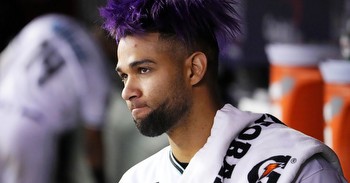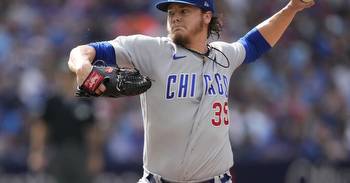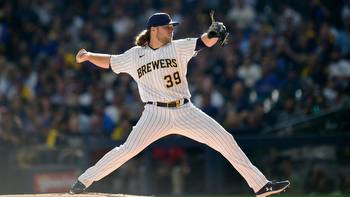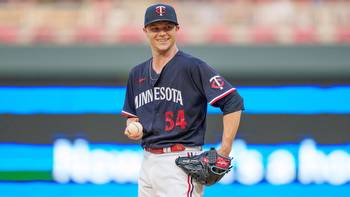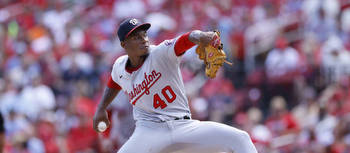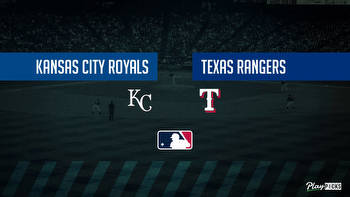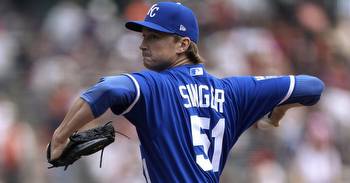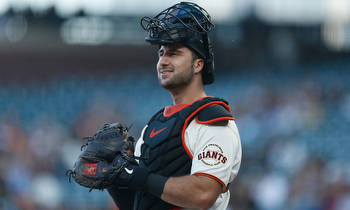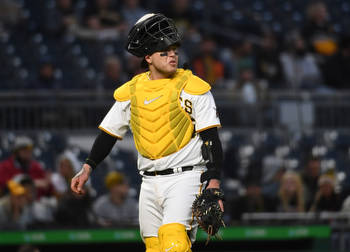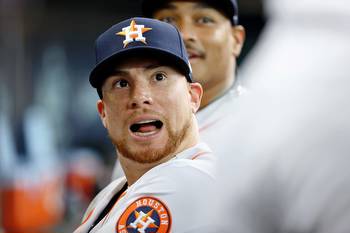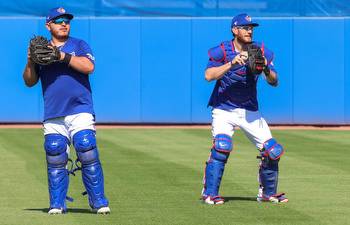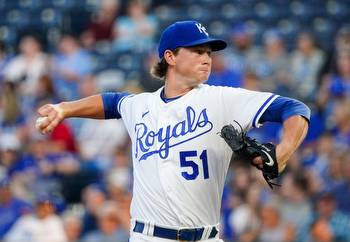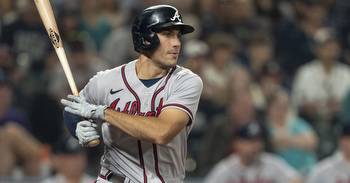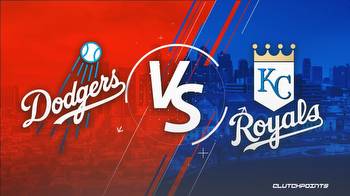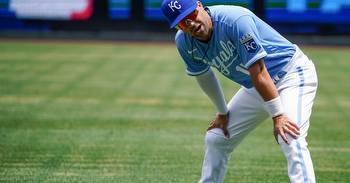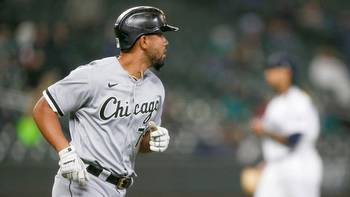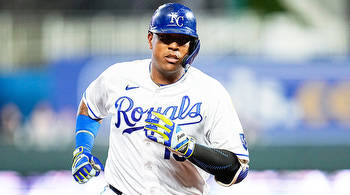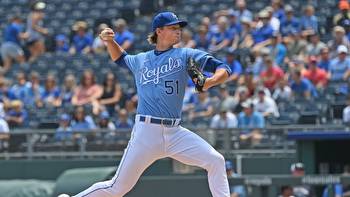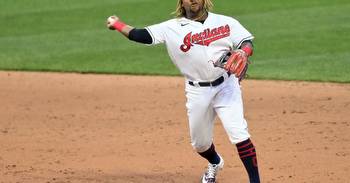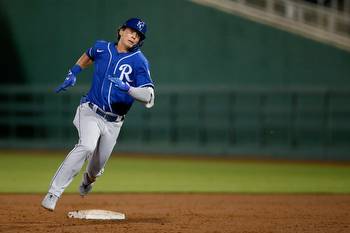These are the MLB prop bets we have our eyes on
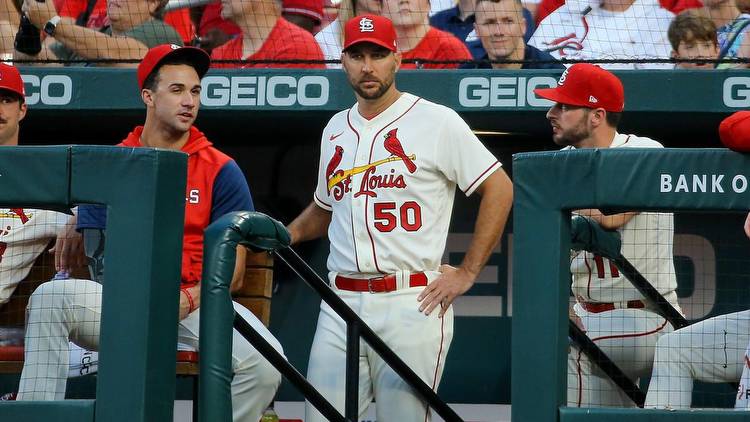
As the MLB season approaches nearer each day, the time to look forward and make predictions is upon us. Making predictions is tough though. There is no direction involved. With each player comes a myriad of statistics to look at, and trying to find one specific figure to follow and make a prediction on can be like finding a hay-colored needle in a hay-colored haystack — absolutely daunting. Even worse, all of the best predictions have already been taken by other outlets who’d made their predictions months ago before the Winter Meetings took place. So instead of making my own predictions, I decided to let Vegas make the predictions for me. Here are a few player prop bets that could make you serious cash in 2023.
Rays’ lefty Jeffrey Springs made the transition from reliever to starter last season and balled out to the tune of a 2.46 ERA. While his strikeout numbers decreased, that’s to be expected for someone pitching far more innings than they were asked earlier in their career. What impressed me most about Springs’ time as a starter was that despite his decreased strikeout stats, Springs still managed a career-high strikeout-to-walk ratio at 4.65 by dropping his walk-per-nine rate to a measly 2.06.
Furthermore, Springs is the antithesis of baseball data. Where most managers would assume Springs struggles against righties, since most southpaws do, Springs actually fares far better against righties than lefties. In 2022, Springs held righties to a triple-slash of .215/.260/.323, good for a 64 OPS-plus. Lefties, meanwhile, slashed .248/.291/.453, good for a 111 OPS-plus. Still, despite the vastly better numbers against righties, Springs still faced righties in 70.45 percent of plate appearances, even though the league, as a whole, faced righties in 60.5 percent of PAs.
Managers still haven’t figured out that Springs struggles against fellow lefties, and you can’t blame them when all the data says the opposite should be true. Until the baseball world realizes they need to play the pitcher, rather than the matchup against Springs, he’ll continue to have good success. That said, the implementation of the shift ban this year could encourage more managers to play left-handed bats this season which could hurt Springs. I wouldn’t expect the rate of left-handed bats to increase so substantially though that Springs falls above his projected ERA.
Look at any prediction site, and they’ll tell you that Salvy is primed to smack 30 bombs in 2023. Why wouldn’t he be? He’s only two years removed from leading MLB in homers and hit 23 in just 114 games last season. I don’t buy it though.
In Pérez’s career, can you tell me how many times he hit more than 27 home runs? Once, and it was that 2021 season where he hit 48. At 33 years old, Pérez will likely need more off days and will be more susceptible to injury, having suffered a series of injuries just last season ranging from his thumb to his back to his hand.
Statistically speaking, it’s likely Pérez will see a drop off in power as well. His Isolated Power (ISO = slugging percentage - batting average) has decreased each of the last three seasons, including a 60-point drop off between 2021 and 2022. To put that in perspective, that’s the second-largest year-to-year difference of Pérez’s career, only defeated by the 96-point difference between his 2018 and 2020 seasons (he didn’t play in 2019), when he went from a .439 slugging percentage to a .633 slugging percentage, albeit during a shortened season.
There are a lot of factors pointing to a decline in power production this year. Perhaps moving Pérez away from the catcher position and using him as a designated hitter more often would help his power. The Royals have reportedly shown interest in making MJ Melendez their catcher of the future, but they also moved him to left field full-time last season, and there’s been no indication that his tenure as the Royals’ franchise backstop will start this year. Pérez will undoubtedly see the most innings behind home plate of any player on the Royals’ roster, and with his power numbers already in decline, that could be a problem.
Another prop bet, another Kansas City Royal. Singer was a breakout pitcher in 2022, posting a 10-5 record and 3.23 ERA, so why do I think he’s suddenly going to fall back to Earth in 2023? Well, there are a few factors. For one, the catchers.
In 2022, among all qualified catchers, Pérez and Melendez ranked 57th and 59th respectively (out of 60) in catcher framing runs. Those numbers aren’t magically going to get better in 2023. Sure, Singer improved drastically in his walk percentage last season, seeing that figure fall from nine percent in 2021 to 5.6 percent in 2022, but a lot of that had to do with players chasing more pitches outside of the zone. In 2022, Singer threw 65.36 percent of his pitches for strikes. In 2021, that number was only slightly worse at 63.66 percent. I’d expect hitters to take a much more cautious approach at the plate against Singer this year, leading to an increase in walk rate, even if it’s not where it was two seasons ago.
Even outside of walk rate, Singer’s batted ball metrics were actually worse last year than they were in 2021. Batters accumulated a hard-hit percentage of 40.9 percent in 2022 compared to 37.6 in 2021. Singer’s barrel percentage also increased from 5.6 percent to 8.2 percent. While Kauffman Stadium has historically been a difficult ballpark to go deep in, over the last three seasons, it has still seen six percent more runs scored than league average, making it the sixth-most offense-friendly ballpark in the league.
To top it off, the Royals were 28th in MLB in Defensive Runs Saved last year. They were also one of the teams that benefited most from the infield shift, earning a collective 13 DRS when playing in the shift. When not in the shift, their defense accrued -3 DRS. With the shift banned in 2023, odds are, the defense will struggle behind Singer.
During his long, illustrious career, Adam Wainwright has pitched over 2100 innings to Yadier Molina. Everybody else combined has less than 500. With the pitch clock being introduced in 2023, the chemistry between a pitcher and a catcher will be more important than ever. Good thing the 41-year-old Wainwright is being gifted Willson Contreras who’s not only never caught for him before, but is also far worse at framing than Molina was. What a great combo! According to MLB.com, Wainwright has a career 3.21 ERA with Molina behind the plate. With all other catchers, his ERA balloons to 4.06.
Even outside of his relationship with Yadi though, Wainwright has been pretty lucky in the ERA department in recent years. While Wainwright has maintained a respectable 3.57 ERA over the last four seasons, his Expected ERA (xERA) has been at least 60 points higher than his actual ERA every season. In 2022, his ERA was 3.71. His xERA was 4.53 though. He’s getting older. He lost his catcher, and he’s been throwing absolute softballs in spring training.
I mean, in 2022, Wainwright’s average velocity on his sinker was 88.7 mph. So far in spring training, his fastest sinker has clocked in at 86.2 mph. Maybe this could just be the spring training effect, and Waino just isn’t putting 100 percent in right now to preserve himself for the entirety of 2023, but it’ll definitely be concerning if he doesn’t bring his velocity up by the start of the season, especially considering his strikeout rate dropped off tremendously last season from 21 percent in 2021 to 17.8 percent in 2022.

